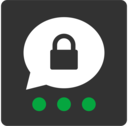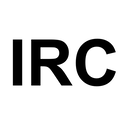Best Messaging Apps Curated by Github Users
Open Source and Always a Work in Progress (WIP)
This technical assessment provides an evidence-based analysis of messaging applications across the full privacy spectrum: text, voice, video, metadata exposure, IP protection, and identity requirements. In contrast to popularity-based rankings, this framework prioritizes verifiable cryptographic privacy through code transparency, independent audits, and operational architecture.
Our evaluation considers:
1. Code Transparency: Public availability of client and server source code
2. Independent Audit: Third party security audits and cryptographic reviews
3. End-to-End Encryption: Default E2EE for text, voice, and video
4. IP Protection: Whether peers or servers can see user IP addresses
5. Identity Requirements: Phone number or real name registration
6. Metadata Protection: Visibility of contacts, timestamps, and routing information
7. Federation: Distributed trust versus centralized backend
8. Operational Verifiability: Whether privacy properties are proven by design
| Rank | Service | Open Source | Audited | Text E2EE | Voice E2EE | Video E2EE | Phone Required | IP Protected |
|---|---|---|---|---|---|---|---|---|
| 1 |  Signal Signal |
Yes | Yes | Yes | Yes | Yes | Yes | Yes (optional relay) |
| 2 |  Threema Threema |
Yes (clients only) | Yes | Yes | Yes | Yes | No | Yes (optional relay; P2P default) |
| 3 |  Wire Wire |
Yes | Yes | Yes | Yes | Yes | No | Yes |
| 4 |  iMessage iMessage |
No | Yes (limited) | Yes | Yes | Yes | No | No (P2P; IP exposed to peers) |
| 5 |  Matrix/Element Matrix/Element |
Yes | Yes | Yes (per-room) | Yes | Yes | No | Yes (needs TURN) |
| 6 |  Session Session |
Yes | Yes | Yes | Yes (beta) | Yes (beta) | No | Yes |
| 7 |  Briar Briar |
Yes | Yes | Yes | No | No | No | Yes |
| 8 |  IRC (Self-Hosted + OTR/FiSH) IRC (Self-Hosted + OTR/FiSH) |
Protocol | No | Yes (plugins) | No | No | No | Yes (server-dependent) |
| 9 |  Telegram Telegram |
Yes (clients only) | Yes (limited) | Yes (optional) | Yes | Yes | Yes | No (P2P default) |
| 10 |  RCS/Google Messages RCS/Google Messages |
No (client proprietary) | No (limited) | Yes (Google only) | No | No | Yes | No |
| 11 |  Facebook Messenger Facebook Messenger |
No | No | Yes (default) | Yes (default) | Yes (default) | No | No |
| 12 |  SMS/MMS SMS/MMS |
Protocol | No | No | No | No | Yes | No |
The following messaging apps provide end-to-end encryption across all communication channels by design.
These applications provide exceptional text privacy. Voice/video features are emerging or absent.
Applications where encryption is not default or applies only to specific communication types.
 1. Signal
1. Signal 2. Threema
2. Threema 3. Wire
3. Wire 4. iMessage / FaceTime
4. iMessage / FaceTime 5. Matrix / Element
5. Matrix / Element 6. Session
6. Session 7. Briar
7. Briar 8. IRC (Self-Hosted + OTR/FiSH)
8. IRC (Self-Hosted + OTR/FiSH) 9. Telegram
9. Telegram 10. RCS / Google Messages
10. RCS / Google Messages 11. Facebook Messenger
11. Facebook Messenger 12. SMS / MMS
12. SMS / MMSSignal and Threema represent the strongest privacy-first messaging platforms with full E2EE across text, voice, and video. Signal's audited protocol provides excellent privacy, though calls are P2P by default (exposing IP addresses to contacts unless "Always relay calls" is enabled). Users comfortable with phone number registration can share via usernames instead. Threema offers similar security without phone number requirements, making it ideal for maximum anonymity, though its server code is proprietary while apps are open source and call IP protection depends on enabling relaying.
Wire provides enterprise-grade E2EE with both clients and server open source under GPL/AGPL licenses, offering strong cryptographic implementation across all channels.
For users prioritizing open source and federation, Matrix/Element provides decentralized E2EE communication with proper TURN configuration to prevent IP leaks. Encryption is enabled per-room, often by default for new private rooms and DMs. Session excels at metadata protection and anonymity with onion routing and has been independently audited by Quarkslab. It now offers voice/video calls in beta (opt-in). Briar, audited by Open Technology Fund, remains the strongest choice for off-grid, metadata-free communication but lacks voice/video entirely.
IRC with proper OTR or FiSH (Blowfish) configuration can provide strong text privacy with pseudonymous usage, though it requires technical expertise and lacks voice/video support. When properly configured with self-hosting and encryption plugins, IRC can exceed the privacy of Telegram and RCS.
Facebook Messenger now provides default E2EE for personal chats and calls (since December 2023), representing a significant improvement. However, extensive metadata collection continues, and the platform's business model remains advertising-focused. Telegram provides E2EE only for secret chats, and academic analysis has identified cryptographic issues in MTProto. Calls expose IP addresses through P2P by default (users can disable P2P to force relay). RCS now offers E2EE for both 1:1 and group conversations between Google Messages users, with cross-platform E2EE (Android–iOS) deploying via the GSMA MLS standard.
SMS/MMS represents the worst communication privacy available, with zero encryption and complete visibility to carriers, MVNOs, and government agencies. It should never be used for private communications.
The choice between messaging platforms depends on threat model: Signal/Threema/Wire for verified secure communication across all channels (with Signal and Threema optionally relaying calls for better IP protection), Matrix for decentralized control, Session for maximum metadata protection with emerging calling features and verified audit, Briar for off-grid communication with verified audit, and properly configured IRC for pseudonymous text-only communication. SMS/MMS should be avoided entirely for any sensitive communication.